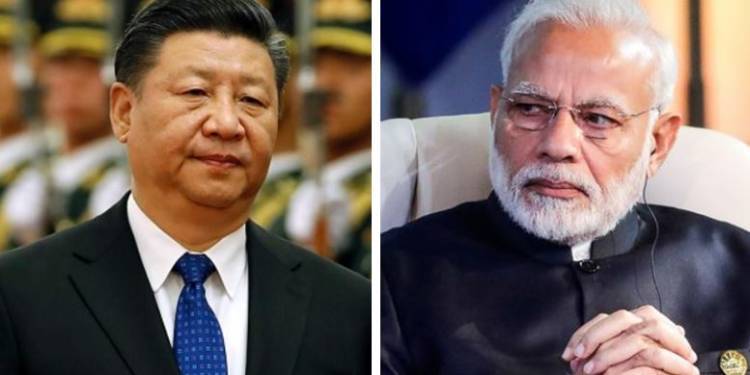The Eastern Ladakh military standoff and the Galwan Valley bloodbath is one misadventure that the Chinese People’s Liberation Army (PLA) and the Chinese Communist Party (CCP) will regret for years to come. The military escalation has permanently challenged the Sino-India relations and New Delhi is fast-emerging as the most dangerous foe of China.
India has started taking matters in its own hands when it comes to containing China in the Indo-Pacific. It is New Delhi which is doing most of the heavy lifting when it comes to uniting the Indo-Pacific against China.
India is at the core of the QUAD and has shown hints of allowing the Australian Navy to participate in the MALABAR annual Navy exercise. New Delhi is also persuading Russia to be more involved in the Indo-Pacific and pursue its own interests. And most importantly, it is taking up the leadership role in the South China Sea which should push ASEAN to be more aggressive against a hawkish Beijing.
For starters, India seems to be shedding its inhibitions about allowing Australia to join the trilateral MALABAR Navy exercise that presently consists of India, Japan and the US. If Canberra joins the annual exercise, then the QUAD could end up engaging at a permanent military level for the first time and that too in India’s backyard in the Bay of Bengal.
While the QUAD could be coming together very soon, it is India which is showing the potential to take up the leadership at a regional level whereas Japan and Australia want the US to be at the fore-front.
New Delhi is in the thick of things when it comes to containing Beijing. In fact, India has also rejected China’s illegal and expansionist claims in the South China Sea that go deep into international waters. Chinese claims are in clear violation of the principle of Res Communis Omnium, that is, the common heritage of the mankind.
India maintains that these are global commons and advocates freedom of navigation and overflights. India is actually doing what the Association of South East Asian (ASEAN) should be doing. It is the ASEAN countries like Vietnam, Malaysia, Brunei and Indonesia who directly face Chinese belligerence in the strategic waterways.
ASEAN statements on the issue are of an exceedingly anodyne character that do not offer great help in containing China geo-strategically. ASEAN countries are more or less reliant on American presence and firepower in the South China Sea. However, New Delhi’s rejection of illegal Chinese claims should push the regional intergovernmental organisation.
In fact, in what can be described as a departure from the soft ASEAN policy on China, the organisation has finally “reaffirmed that the 1982 UNCLOS is the basis for determining maritime entitlements, sovereign rights, jurisdiction and legitimate interests over maritime zones.”
Also, India is pushing Russia to participate more directly in the Indo-Pacific. The Indian envoy to Russia, D. B. Venkatesh Varma has said that India wants Russia to be more involved in the Indo-Pacific, and that Moscow should look towards its own interests in region which will create a mutual basis for cooperation.
India wants Russia to be more involved in #IndoPacific. Moscow should look to own interests in region wch will create mutual basis for cooperation: Amb DBV Varma @IndEmbMoscow @Russian_Council @ICWA_NewDelhi @tca_raghavan @RusEmbIndia @MEAIndia @mfa_russiahttps://t.co/VcAbEg9O3e
— Dinakar Peri (@dperi84) July 15, 2020
India is using all its political heft to push against China in the Indo-Pacific. Moscow formally claims that the Indo-Pacific is an artificial concept that is divisive and aims to contain China. But New Delhi understands that this is only a part of Moscow’s “axis of convenience” with China. Kremlin is not unaware of the realpolitik and does understand the importance of the Indo-Pacific strategy.
There are interests that Russia wants to pursue in the Indo-Pacific such as the Chennai-Vladivostok sea route. The sea link passes through the South China Sea and connects the Russian Far East to India. China has laid its eyes on the resource-rich Russian Far East and has in fact informally staked claim on Vladivostok itself. The sea link is a common ground between India and Russia in the Indo-Pacific.
From New Delhi’s point of view Russia, non-American QUAD partners- Japan and Australia, and the ASEAN countries are the biggest stakeholders in the Indo-Pacific, apart from the United States. But it is India which is pushing a belligerent China to the wall.
The US remains the force that weighs down China in the region. Recently, the Trump administration has sent a guided missile destroyer into the disputed South China Sea waters along with USS Ralph Johnson which is further bolstered by two Supercarriers- USS Ronal Reagan and USS Nimitz.
But the American forces alone can only maintain the fragile balance of power in the region. However, New Delhi’s new and assertive leadership role is changing the region forever by tilting the balance against China and nipping Beijing’s expansionist plans in the bud.
